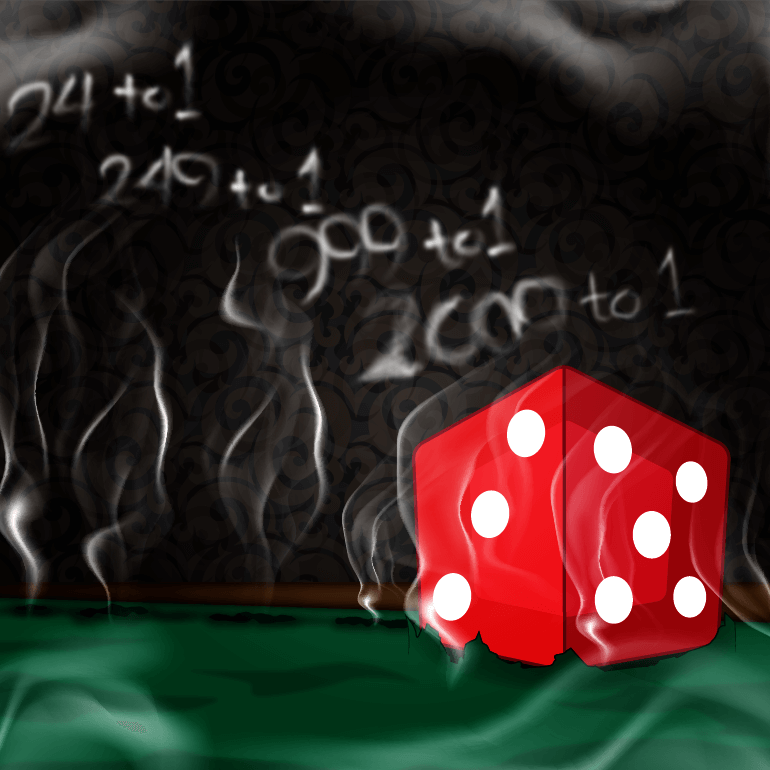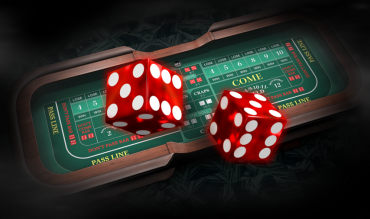There are times craps shooters are cold, times they're hot, and times they're on fire. It's for those time shooters are burning through the points that the craps fire bet was devised.
Win the fire bet, and you could walk away with a 999-1 payoff, turning a $1 side bet into a cool $1,000. That's the kind of payoff not available on standard craps, where the pass line pays even money and long shots such as bets on 2 or 12 reach only 30-1.
This fire bets craps strategy is there for the same reason Caribbean Stud Poker has it progressive side bet and some casinos offer the Lucky Ladies side bet in blackjack. It adds excitement for players who love long shots and live for jackpots.
It's not for everyone. Big payoffs require long odds, and the odds against winning the fire bet are longer than those on any other craps wagers.
WHAT IS THE CRAPS FIRE BET?
The fire bet is a wager the shooter will make at least four different points on the pass line before sevening out.
They have to be different numbers — the shooter could make four 6s in a row, and that would count as only one number.
As craps players know, there are six potential point numbers: 4, 5, 6, 8, 9 or 10. In the most common fire bet pay table, making four of that point pay 24-1, making five of them pays 249-1 and making all six pays the big jackpot of 999-1.
HOW TO PLAY THE CRAPS FIRE BET
Not all offline and online casinos offer the fire bet. At those that do, here are the set of rules for craps fire bets:
- You begin on the comeout roll by putting your chip or chips on the layout and telling the dealer you want the fire bet.
- Comeout wins on 7 or 11 or comeout losses on 2, 3 or 12 do not affect the fire bet. In fact, as long as those are the only results, you may take your bet down.
- Once the shooter establishes his first point, the fire bet must stay in action until it wins or loses.
- If the shooter makes a point, a dealer puts a fire disk on that number. Play then moves on to another comeout.
- If the shooter then establishes a different point number and makes it, a dealer puts a fire disk on that number, too. The same procedure would follow if the shooter made additional points.
- Anytime the shooter makes a point he already has made, no additional fire disk is placed on the layout. Disks are added only after points made for the first time in the fire sequence.
- If the shooter sevens out with zero, one, two or three fire disk covering made points, then you lose your fire bet.
- If the shooter sevens out with four or five fire disks on the layout, or if he makes all six points without sevening out, then you're paid according to the pay table.

CRAPS FIRE BET ODDS
You will win at craps by using the fire bets slightly more than 1 percent of the time.
There are several pay tables available, but the most commonly used are:
- 24-1 on four numbers made
- 249-1 on five numbers and 999-1 on five numbers.
It's common for casinos to list the fire bet at odds-for-1 so they can display a nice, even, 1,000-unit payoff for six numbers made. A 1,000-for-1 payoff is the same as 999-to-1. If you bet $1 and the shooter makes six numbers, you get your $1 bet back and collect $999 in winnings for a total of $1,000.
Calculations are complex because of the need to make specific numbers. If the shooter starts by making a point 6, then he needs to make 4, 5, 8, 9 or 10, and making another 6 doesn't help the cause. If he then makes a point 10, he then needs to make 4, 5, 8 or 9, and neither 6 nor 10 help, and so on.
Because of that, calculation's can't strictly focus on odds of making a point. They have to include odds of making a point in a decreasing field of available numbers.
Michael Shackelford calculated the chances of the shooter making four different points before sevening out at 0.88 percent.
Multiply that 0.0088 chance by 24 -- reflecting the 24-1 payoff, and you get 0.211. Basically, four points give you back 21 cents of every dollar you wager.
There's a 0.164 percent chance of making five in a row -- 0.00164 time 100 to convert to percent. Multiply 0.00164 times 249 to reflect the payoff, and you get 0.408, meaning winning with five numbers get you about 41 cents per dollar wagered.
Finally, there's a 0.0162 percent chance of making six in a row, or 0.000162 times 100 to convert to percent. Multiply 0.000162 times 999 for the payoff, and you get 0.162. The shooter making all six numbers gets you 16 cents per dollar wagered.
Add up all the paybacks, and you see that the average return for all craps winners combined is about 78 cents per dollar wagered. There are some rounding issues at work, and the total return really is a bit more than 79 cents.
That leaves a house edge of just under 21 percent -- 20.8 percent, to be a bit more precise.
More rarely seen pay tables include one that returns only 10-1 on four numbers and 200-1 on five, but pays a big 2,000-1 jackpot on six. The house edge is 24.9 percent.
Another starts payoffs at 6-1 on only three numbers, then pays 29-1 on four numbers, 149-1 on five and a smaller than usual jackpot of 299-1 on all six.
Any of those house edges are higher than others at craps, which usually maxes ou at a 16.67 percent edge on any seven.
Craps players who are happy to try to grind out a profit on low house-edge bets such a pass plus free odds will see the fire bet as one to avoid.
But for long-shot players who revel in jackpot chances, a hot shooter and the fire bet go together like smoke and flames.


